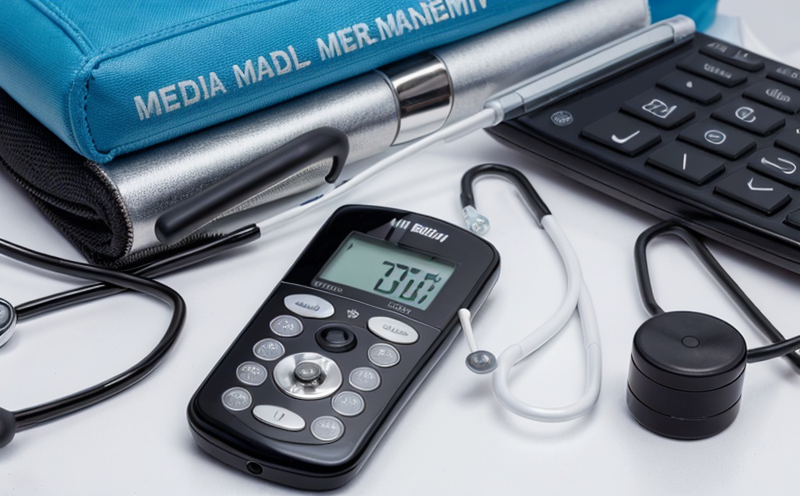Medical Device Risk Management under MDR: A Comprehensive Guide
The Medical Device Regulation (MDR) has brought significant changes to the medical device industry in Europe, particularly with regards to risk management. The new regulation emphasizes the importance of effective risk management throughout the lifecycle of a medical device, from design and development to post-market surveillance.
What is Risk Management under MDR?
Risk management is a systematic approach to identifying, assessing, and mitigating risks associated with medical devices. Under MDR, manufacturers are required to implement a risk management process that includes:
Identifying hazards and potential risks
Assessing the severity of these risks
Determining control measures to mitigate or eliminate risks
Monitoring and reviewing the effectiveness of these controls
The goal of risk management under MDR is to ensure that medical devices are designed and manufactured with safety in mind, and that any potential risks are mitigated to an acceptable level.
Key Elements of Risk Management under MDR
Here are some key elements of risk management under MDR:
Risk Assessment: This involves identifying hazards and assessing their severity. Manufacturers must use a systematic approach to identify all potential hazards associated with the device, including those related to its design, materials, manufacturing process, labeling, and instructions for use.
Risk Evaluation: Once hazards have been identified, manufacturers must evaluate the likelihood of each hazard occurring and its potential impact on patients or users.
Control Measures: Based on the risk evaluation, manufacturers must determine which control measures are necessary to mitigate or eliminate risks. These may include design changes, material substitutions, process improvements, labeling updates, or training programs.
Monitoring and Review: Manufacturers must regularly monitor and review the effectiveness of their control measures and make any necessary adjustments.
Risk Management Process under MDR
Here is a detailed example of how risk management can be implemented under MDR:
Step 1: Identify Hazards
Review device design, materials, manufacturing process, labeling, and instructions for use
Consult with experts (e.g. clinicians, engineers, regulatory affairs)
Conduct literature reviews and analysis
Step 2: Assess Severity of Hazards
Use a systematic approach to assess the severity of each hazard
Consider factors such as:
Likelihood of occurrence
Potential impact on patients or users
Effectiveness of control measures
Step 3: Determine Control Measures
Based on risk evaluation, determine necessary control measures
Consider factors such as:
Design changes
Material substitutions
Process improvements
Labeling updates
Training programs
Step 4: Implement and Monitor Control Measures
Put control measures in place
Regularly monitor and review effectiveness of controls
Make any necessary adjustments or updates
QA Section
Here are some additional questions and answers to provide further guidance on medical device risk management under MDR:
Q1: What is the purpose of risk management under MDR?
A1: The purpose of risk management under MDR is to ensure that medical devices are designed and manufactured with safety in mind, and that any potential risks are mitigated to an acceptable level.
Q2: Who is responsible for implementing risk management under MDR?
A2: Manufacturers are responsible for implementing risk management under MDR. This includes identifying hazards, assessing severity, determining control measures, and monitoring their effectiveness.
Q3: What is the difference between risk assessment and risk evaluation?
A3: Risk assessment involves identifying hazards and assessing their potential impact on patients or users. Risk evaluation involves evaluating the likelihood of each hazard occurring and its potential impact.
Q4: Can a manufacturer outsource risk management to a third-party?
A4: Yes, manufacturers can outsource risk management to a third-party, but they remain responsible for ensuring that risk management is properly implemented and documented.
Q5: How often must manufacturers review and update their risk management processes under MDR?
A5: Manufacturers must regularly review and update their risk management processes as necessary. This includes reviewing new scientific evidence, technological advancements, and post-market data.
Q6: What are some common control measures used to mitigate risks under MDR?
A6: Some common control measures used to mitigate risks under MDR include design changes, material substitutions, process improvements, labeling updates, and training programs.
Q7: Can a manufacturer use a pre-existing risk management process under MDR?
A7: Manufacturers can use a pre-existing risk management process under MDR, but it must be reviewed and updated to ensure that it complies with the new regulation.
Q8: What are some best practices for implementing risk management under MDR?
A8: Some best practices for implementing risk management under MDR include:
Using a systematic approach to identify hazards and assess severity
Consulting with experts (e.g. clinicians, engineers, regulatory affairs)
Regularly reviewing and updating the risk management process
Documenting all aspects of the risk management process
Q9: What are some common pitfalls or challenges associated with implementing risk management under MDR?
A9: Some common pitfalls or challenges associated with implementing risk management under MDR include:
Insufficient training or expertise
Inadequate documentation or record-keeping
Failure to regularly review and update the risk management process
Difficulty in identifying hazards or assessing their severity
Q10: Where can manufacturers find more information on medical device risk management under MDR?
A10: Manufacturers can find more information on medical device risk management under MDR from various sources, including:
EUs Official Journal of the European Union (OJEU)
European Commissions website
Regulatory agencies websites (e.g. National Competent Authorities)
Industry associations and trade organizations
Consulting firms or regulatory experts

































